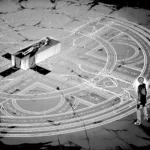If you’re fascinated by the wonders of the universe and the minds behind its exploration, prepare to embark on a journey of discovery. In this article, titled “Uncovering the Enigmatic: Johannes Kepler’s Fascinating Facts,” we delve into the captivating life and contributions of the renowned German mathematician, astronomer, and astrologer, Johannes Kepler. From intriguing revelations about his mother’s trial for witchcraft to his pioneering work in modern optics and his role as Imperial Mathematician to the Holy Roman Emperor, Kepler’s story is as enigmatic as it is awe-inspiring. Join us as we shed light on lesser-known aspects of Kepler’s life, unveiling the extraordinary legacy left behind by this scientific pioneer.

Key Takeaways:
1. Johannes Kepler was a German astronomer and mathematician who lived from 1571 to 1630.
2. He invented the Keplerian telescope, which improved the design of refracting telescopes.
3. Kepler was a math teacher and a supporter of the heliocentric model of the universe.
4. He formulated the three laws of planetary motion, which explain how planets orbit the sun.
5. Kepler had two marriages and a strained relationship with his father-in-law.
6. He defended his mother against accusations of witchcraft in a trial.
7. The location of Kepler’s grave is unknown as it was destroyed during the Thirty Years’ War.
Johannes Kepler Interesting Facts
Kepler’s Revolutionary Ideas
Did you know that Johannes Kepler was a groundbreaking astronomer who revolutionized our understanding of the universe? Let’s uncover some intriguing facts about this enigmatic figure.
1. Defender of the Heliocentric Model
Kepler was a staunch supporter of the heliocentric model, proposed by Copernicus, which states that the Earth and other planets revolve around the sun. In a time when the geocentric theory still prevailed, his unwavering belief in the heliocentric model revealed his forward-thinking mindset.
2. Three Laws of Planetary Motion
One of Kepler’s most significant contributions is his formulation of the three laws of planetary motion. These laws describe how planets move in their orbits around the sun. They not only confirmed the heliocentric model but also laid the foundation for Isaac Newton’s laws of motion.
3. Keplerian Telescope
Kepler creatively improved the design of the refracting telescope, resulting in the invention of the Keplerian telescope. This innovation contributed to the advancement of astronomical observations and allowed for a clearer view of celestial objects.
Kepler’s Personal Journey
Beyond his scientific achievements, Kepler’s personal life was filled with fascinating stories. Let’s take a closer look.
4. Kepler the Math Teacher
Before delving deep into the realm of astronomy, Kepler taught mathematics at a seminary in Graz, Austria. This experience cultivated his analytical thinking skills and set the stage for his future astronomical endeavors.
5. Tumultuous Relationships
Kepler’s personal relationships were far from uneventful. He married twice and faced numerous challenges, including a difficult relationship with his father-in-law. These personal struggles added layers of complexity to Kepler’s life.
6. Kepler’s Display of Loyalty
When Kepler’s mother was accused of witchcraft, he unflinchingly defended her in a trial. This act of unwavering loyalty demonstrated his strong family bond and ethical convictions.
7. Lost Gravesite
Sadly, the location of Kepler’s final resting place remains unknown. During the tumultuous Thirty Years’ War, his grave was destroyed, leaving behind only his legacy.
Conclusion
Johannes Kepler’s contributions to the fields of astronomy and physics are undeniably remarkable. From his groundbreaking ideas to his intriguing personal life, Kepler’s story captivates and inspires. By understanding the fascinating facts about Johannes Kepler, we can gain a deeper appreciation for the wonders of the universe and the brilliant minds that shape our understanding of it.
So, let us unravel the mysteries of Kepler’s life, embrace the spirit of scientific exploration, and uncover the boundless wonders that lie beyond.
Check out these Interesting Facts About Mary Jackson that will blow your mind! Explore more about her remarkable achievements here.
#10 KEPLER LAID THE FOUNDATION OF MODERN OPTICS
Johannes Kepler, the renowned German mathematician, astronomer, and astrologer, left an indelible mark on the field of optics. His groundbreaking work paved the way for modern understanding and advancements in the science of optics. Let’s explore some fascinating facts about Kepler’s contributions to this field.
Kepler’s Investigation into the Formation of Pictures
In his book Astronomia Pars Optica, Kepler delved into the formation of pictures using a pinhole camera. He discovered that when light passes through a small hole, it creates an inverted image on the opposite surface. This observation laid the groundwork for our understanding of how cameras capture images.
Explaining the Process of Vision by Refraction
Kepler was the first to provide an explanation for the process of vision by refraction within the eye. He proposed that as light enters the eye, its path gets refracted, or bent, by the eye’s lens. This concept forms the basis of modern understanding of how our eyes perceive the world around us.
Designs for Eyeglasses
Kepler’s understanding of optics extended to practical applications as well. He formulated designs for eyeglasses to correct vision problems such as nearsightedness and farsightedness. These designs, based on his knowledge of how light behaves when passing through lenses, revolutionized the field of optometry.
Depth Perception and Binocular Vision
Another intriguing aspect of Kepler’s work in optics was his explanation of depth perception and the role of binocular vision. He elucidated how our brain combines the slightly different images received by each eye to perceive depth and distance accurately. Kepler’s insights into binocular vision continue to shape our understanding of the intricacies of human sight.
Shattering Beliefs in Circular Orbits
Kepler’s discoveries in astronomy shattered long-held beliefs in circular planetary orbits and introduced the concept of elliptical orbits. These revelations were not only significant in the realm of astronomy but also had profound implications for optics. By understanding the motion of celestial bodies in elliptical paths, Kepler’s work laid the foundation for modern optical technologies, such as satellite positioning systems.
Key Takeaways:
- Johannes Kepler made significant contributions to the field of optics, laying the foundation for modern understanding and advancements.
- His investigations into the formation of pictures using a pinhole camera provided insights into image formation, essential for the development of cameras.
- Kepler’s explanation of vision by refraction within the eye revolutionized our understanding of how we perceive the world visually.
- His designs for eyeglasses based on optical principles helped correct vision problems, leading to advancements in optometry.
- Kepler’s explanation of depth perception and binocular vision shed light on how we perceive depth and distance accurately.
- His discovery of elliptical planetary orbits shattered the belief in circular orbits, revolutionizing optics and shaping modern technology.
Sources:
1. Cosmos Magazine: Science history: Kepler’s optics and orbits
2. Learnodo Newtonic: Johannes Kepler | 10 Facts About The German Astronomer
5. He Served as Imperial Mathematician to the Holy Roman Emperor
Johannes Kepler, the renowned German mathematician, astronomer, and astrologer, had a remarkable career that spanned the realms of both science and politics. One of the most intriguing aspects of Kepler’s life was his tenure as Imperial Mathematician to the Holy Roman Emperor.
But what exactly does this title entail? How did Kepler come to hold such a prestigious position?
As Imperial Mathematician, Kepler played a crucial role in the court of Emperor Rudolf II, who ruled over the Holy Roman Empire during the late 16th and early 17th centuries. This position was not merely ceremonial; it involved advising the emperor on matters of astronomy, mathematics, and astrology, and conducting important astronomical observations and calculations.
Kepler’s appointment to this esteemed position came after the untimely death of his predecessor, the renowned astronomer Tycho Brahe. Kepler was chosen by the emperor himself due to his exceptional reputation as a mathematician and his groundbreaking work in astronomy. The appointment as Imperial Mathematician was a recognition of Kepler’s expertise and his significant contributions to the field.
As Imperial Mathematician, Kepler had access to state-of-the-art instruments and resources, which allowed him to carry out his astronomical research and make groundbreaking discoveries. He was able to apply his rigorous scientific methods and meticulous calculations to unravel the mysteries of the celestial bodies, including their motion and interactions.
His position also gave him the opportunity to interact with other eminent scientists and intellectuals of his time, fostering collaboration and the exchange of ideas. Kepler’s role as Imperial Mathematician provided him with a platform to communicate his findings and theories to a broader audience, which greatly contributed to the dissemination of his work and the advancement of scientific knowledge.
Kepler’s experience as Imperial Mathematician to the Holy Roman Emperor undoubtedly played a pivotal role in shaping his career and cementing his status as one of the greatest astronomers in history. His deep understanding of celestial mechanics, combined with his access to resources and the support of the imperial court, allowed him to make groundbreaking discoveries and ultimately redefine our understanding of the universe.
As we delve into the fascinating life of Johannes Kepler, it is essential to acknowledge the significant impact he made as Imperial Mathematician to the Holy Roman Emperor. This position not only elevated his status as a scientist but also provided him with the platform and resources to revolutionize our understanding of the cosmos.
Key Takeaways:
- Johannes Kepler served as Imperial Mathematician to the Holy Roman Emperor, Emperor Rudolf II.
- This position involved advising the emperor on astronomy, mathematics, and astrology and conducting important astronomical observations and calculations.
- Kepler was appointed to this prestigious role following the death of the renowned astronomer Tycho Brahe.
- As Imperial Mathematician, Kepler had access to state-of-the-art instruments and resources, enabling him to make groundbreaking discoveries and further the field of astronomy.
- His position also allowed him to collaborate with other notable scientists and intellectuals of his time, contributing to the exchange of ideas and the advancement of scientific knowledge.
Sources:
- Learnodo-newtonic.com. (n.d.). Johannes Kepler | 10 Facts About The German Astronomer. [online] Available at:
- Wikipedia. (n.d.). Johannes Kepler. [online] Available at:

FAQ
Q1: Was Johannes Kepler’s mother accused and tried for witchcraft?
A1: Yes, Kepler’s mother was accused of witchcraft and he defended her in a trial.
Q2: How many times was Johannes Kepler married and did he have children?
A2: Johannes Kepler was married twice and he had a number of children.
Q3: What was Johannes Kepler’s position in the Holy Roman Empire?
A3: Kepler served as Imperial Mathematician to the Holy Roman Emperor, a prestigious position.
Q4: What contributions did Johannes Kepler make to the field of optics?
A4: Kepler laid the foundation of modern optics and investigated the formation of pictures with a pinhole camera.
Q5: What are some famous works by Johannes Kepler?
A5: Some of Johannes Kepler’s famous works include “Astronomia nova,” “Harmonice Mundi,” and “Epitome Astronomiae Copernicanae.”
- Star Ring Trends: Etsy vs Amazon - March 28, 2025
- Boost Pollinator Habitats: Baby Blue Eyes Sustainable Farming Guide - March 28, 2025
- Protect Big Black Bears: Effective Conservation Strategies - March 28, 2025
















